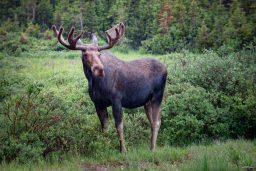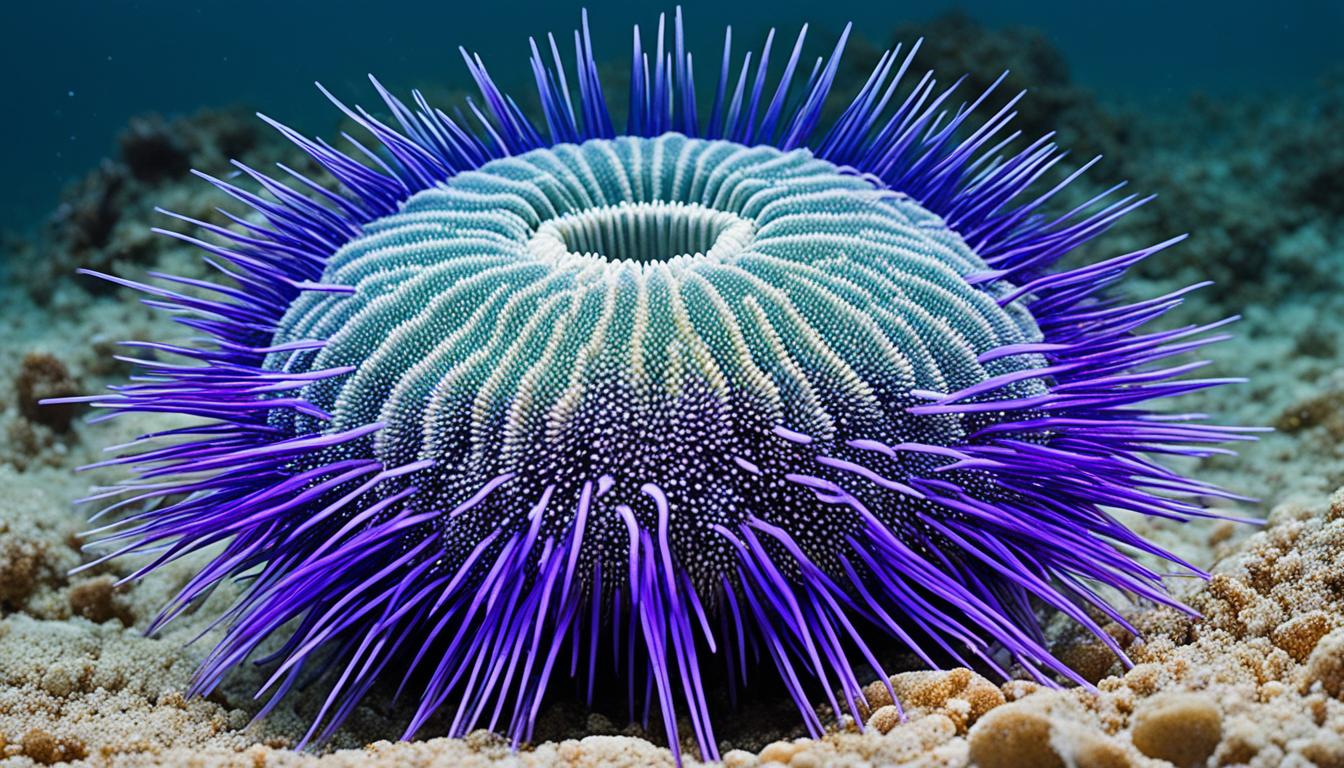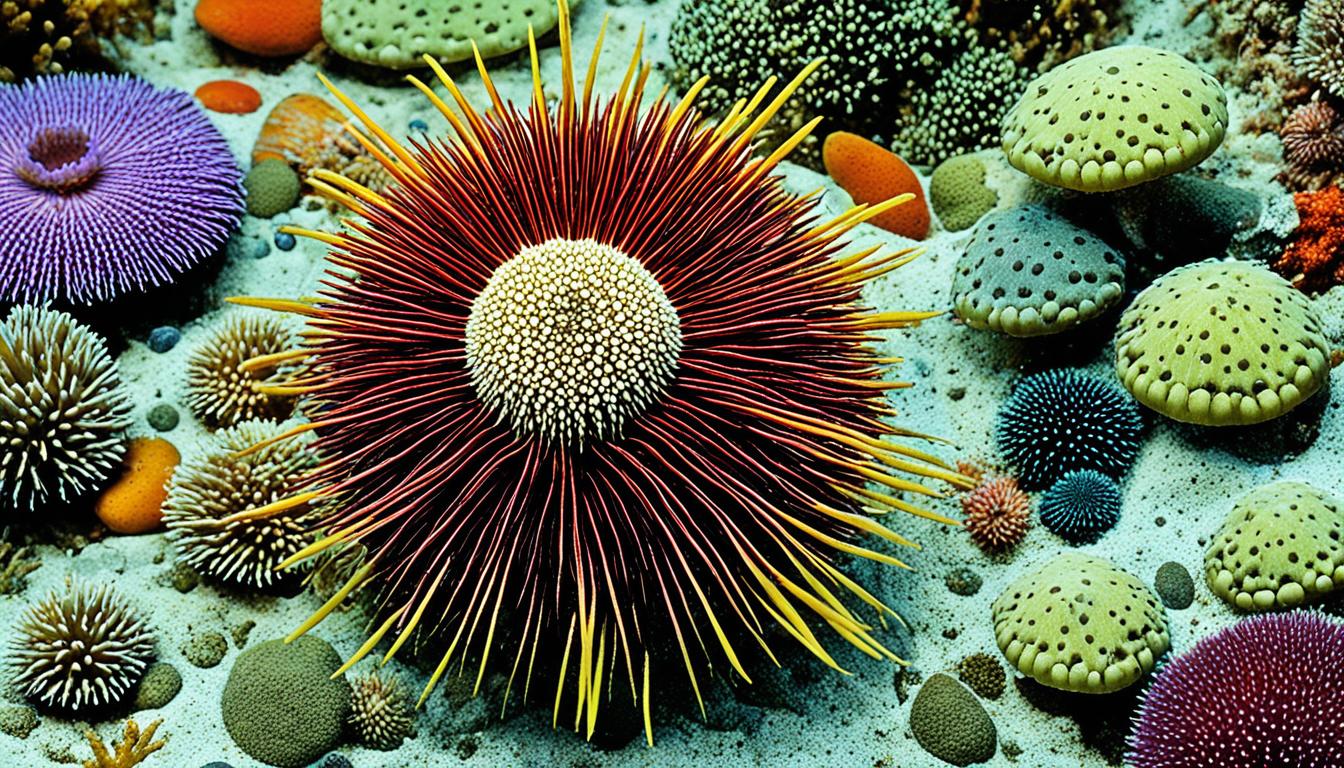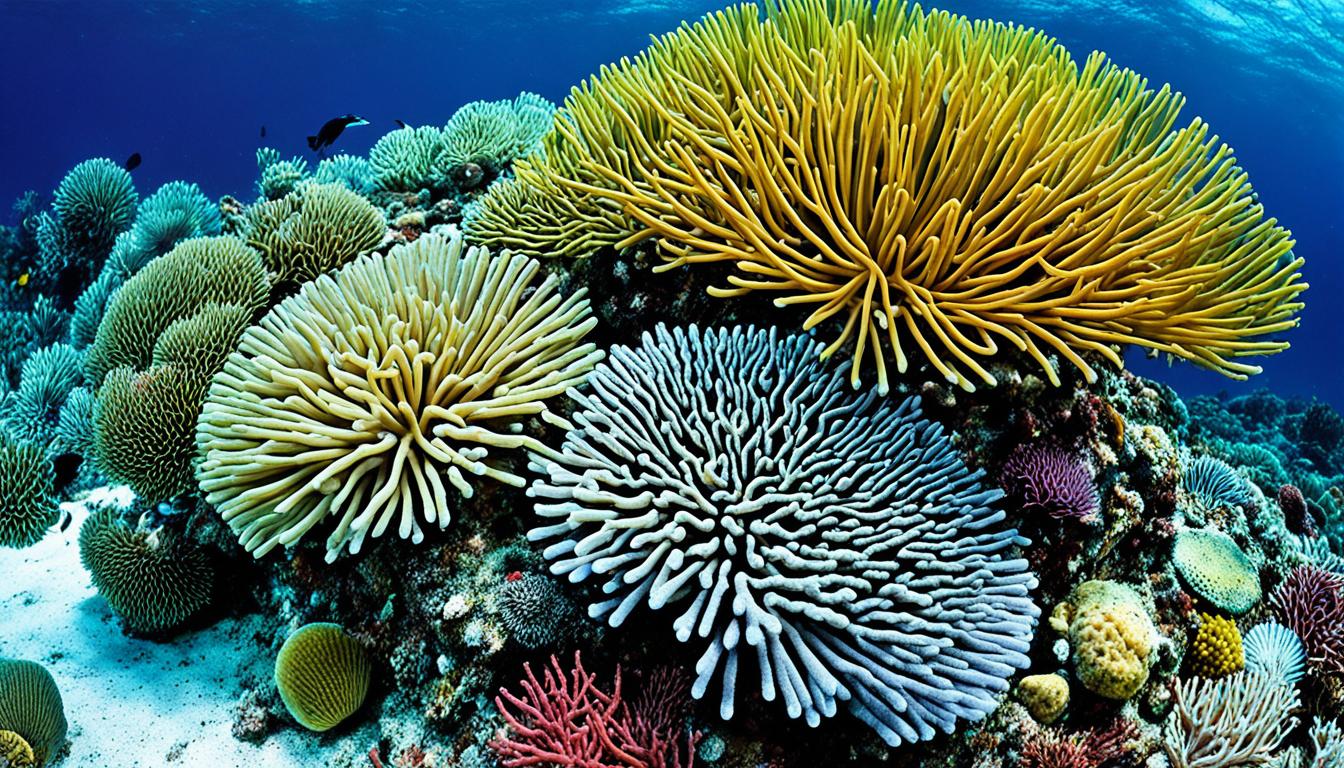Moose often doze standing up on their feet during the day. They do this for various reasons including safety and saving energy, but often sleep laying down too.
Why Do Moose Sleep Standing Up?
Like most large herbivores, moose (Alces alces) have a set of adaptations that enable them to relax when standing fully upright.
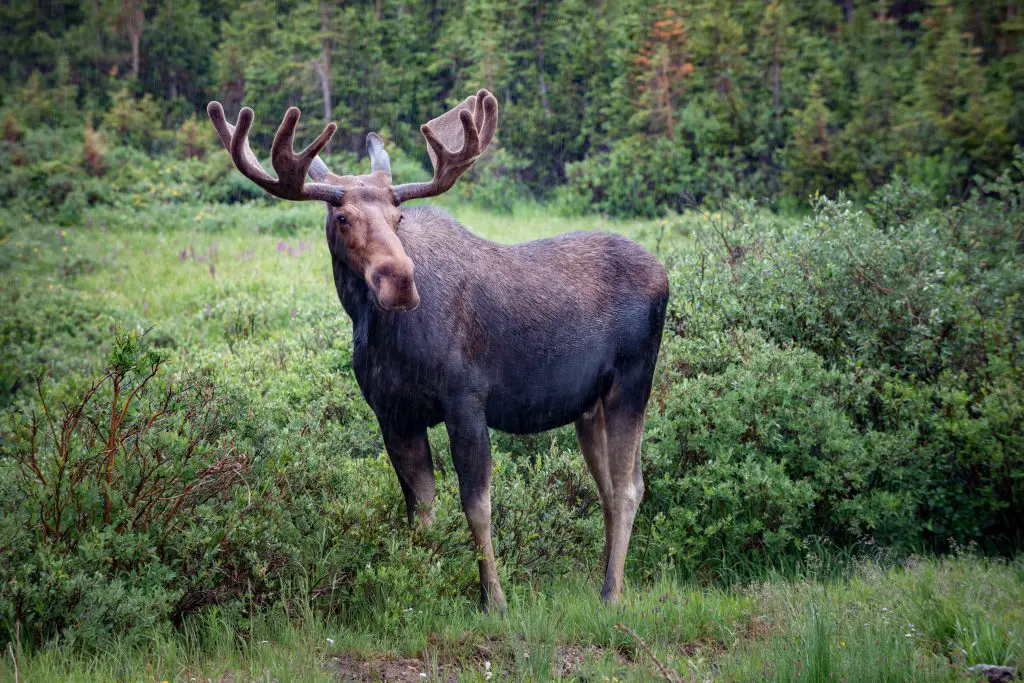
There are many reasons for these adaptations and they benefit the animal in many different ways.
Moose share a feature common with other ungulates (animals that walk on hooves) in that their muscles are ‘at rest’ in the standing position – as a default setting.
This allows them to stand up with very little effort at all – all the effort is in the moving part.
This amazing piece of biological engineering means that they can sleep or snooze standing up – and with their head upright – for hours on end without getting the ache we humans get from standing up too long or holding an arm up in the air.
The advantages of this are that they are already up and ready to move if they feel a threat or sense any danger.
Being a prey animal, they need to stay active and be ready to run at the slightest whiff of a wolf – and being so large is a disadvantage in the speed stakes.
It can take a moose a while to get up off the ground in a hurry seeing as they can weigh up to 700kg (1543lb) and have antlers weighing the same as an average 4-year old child atop their heads.
Do Moose Sleep Laying Down Too?
There are times when a moose wants to fully relax. They can often be seen fully reclined on the ground, sleeping soundly – but they can only do this when they feel totally safe from predators.
In moose parlance, this is called ‘bedding down’ and they often choose a spot within some thickets or scrubby undergrowth to remain partially hidden.
However, in warm weather (for them at least) they may bed down in the open, or even in a stream. They usually bed down with their legs tucked under them and just tilt to one side. In large, antlered males – they often rest one of their antlers on the ground too, to take the weight off their necks.
Although they still have to be wary of predators – they have the advantage of size, so if they need a full-on sleep – they bed down and really drop off.
Often they can wake up under a blanket of snow (they actually camouflage really well this way) or drop off completely with their legs outstretched in front of them – especially after a long and tiring rut.
Can Moose Sleep During The Day?
Generally, moose are most active for feeding around dusk and dawn, they are diurnal (active mainly during the day).
They tend to snooze or sleep for most of the day if it is warm – often bedding down or standing under trees to shade themselves (sometimes even eating the shade).
They feed and move around at night when needed, but do try to avoid it, continuing to rest more throughout the night where they can.
It makes sense for them to snooze during the day as this is when the temperatures are highest, the vegetation is driest, and when visibility is best. Although they are huge with hardly any common predators, they are still wary of things and people – and can get spooked easily.
However, they can also be very aggressive if you approach them in the breeding season (males) and calving season (with the females) so don’t think those dozing giants will stay that way as you get closer.
What Are the Requirements for Owning a Moose as a Pet?
Before owning a moose, certain requirements must be met. First, an adequate living space should be available, accommodating their size and need for a natural habitat. Additionally, qualified veterinary care is crucial for their overall well-being. Furthermore, special permits and licenses are often necessary to legally possess and care for a moose. Taking into account these requirements, owning a moose requires careful planning and compliance with regulations.
What Are Moose Scared Of?
Generally, moose aren’t scared of anything in the sense of say, spiders or clowns, but they will react to various things depending on their age, the season, where they are, or how strong they are feeling.
Their main predators are (packs of) wolves and (well-armed) humans, although they don’t actively run from either – hoping to win a stand-off out of strength (or wait for boredom to set in). A single wolf is no threat to a moose so they wait for it to pass by.
Additionally, bears can sometimes kill moose although not as common – and there are also reports of an orca killing moose as they swim across large channels and sounds. Moose are excellent swimmers and often take to the water to reach new pastures, however a land-based mammal – no matter how big or well-armed – is no match at all in the water for an aquatic hunter.

